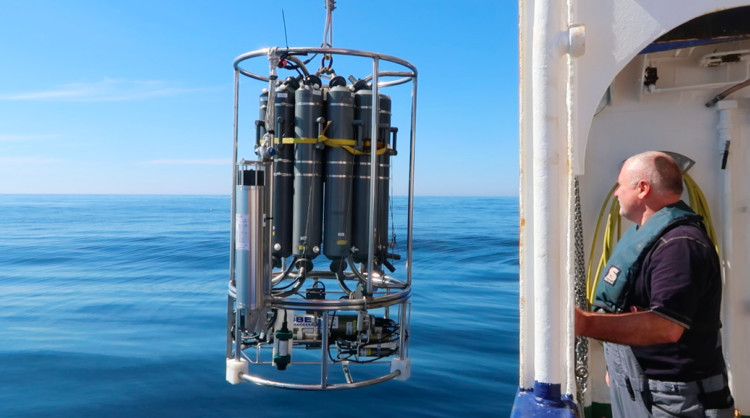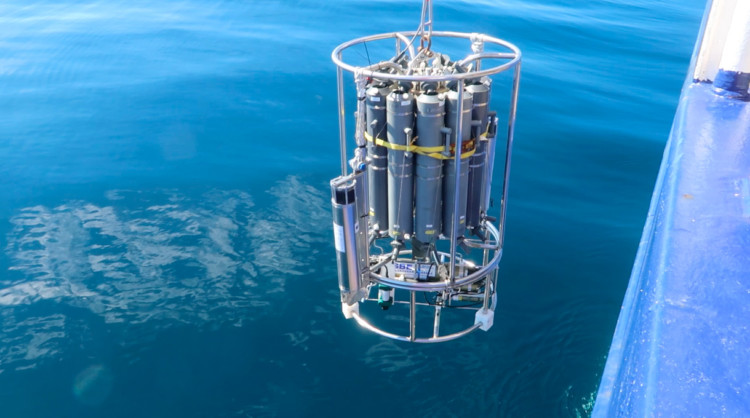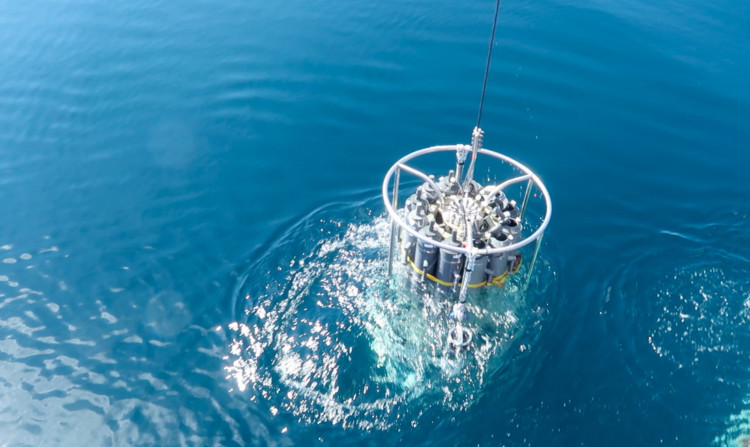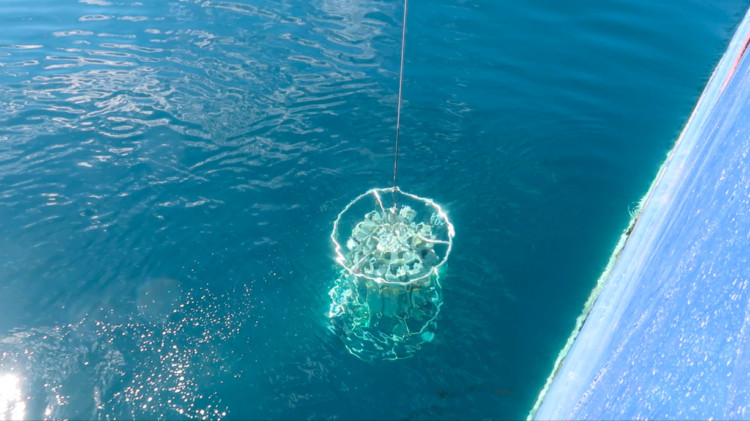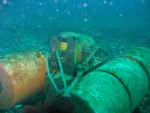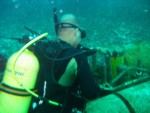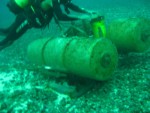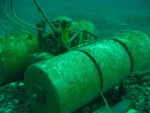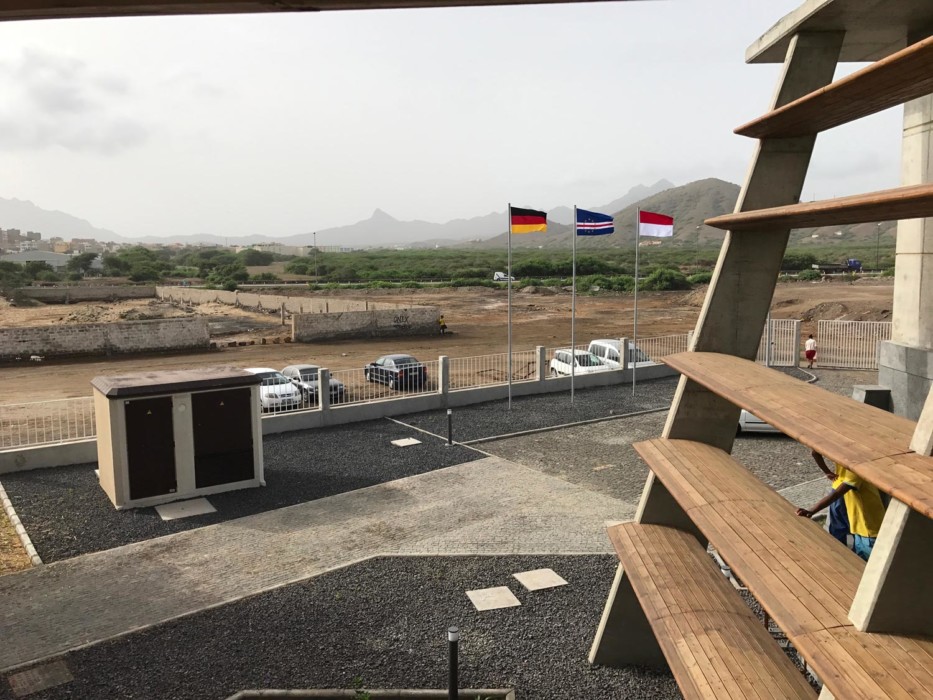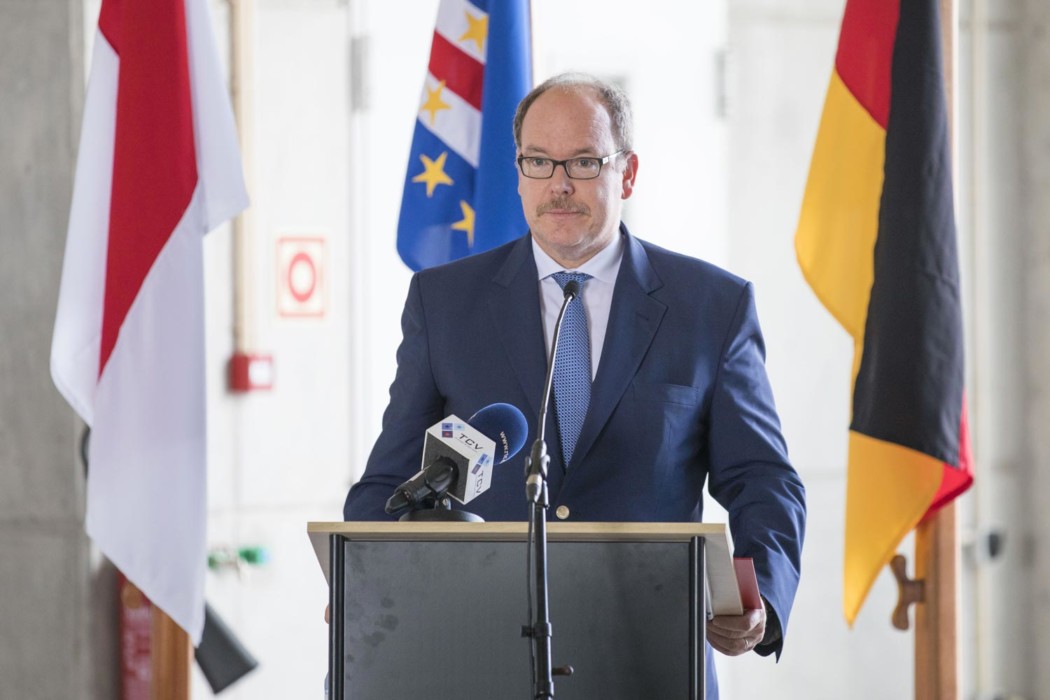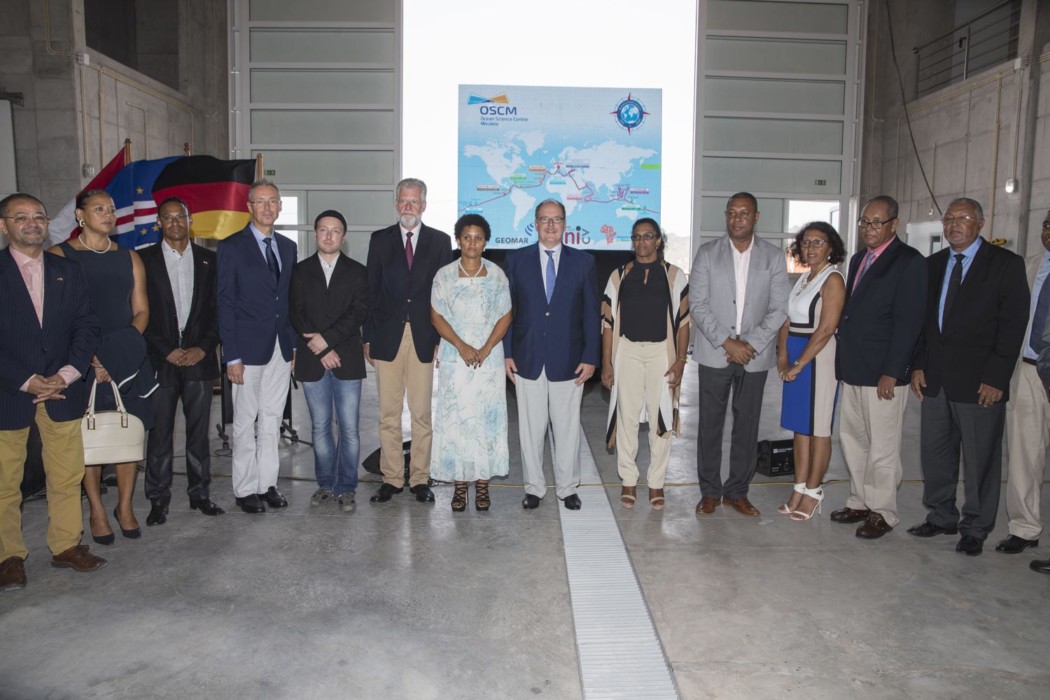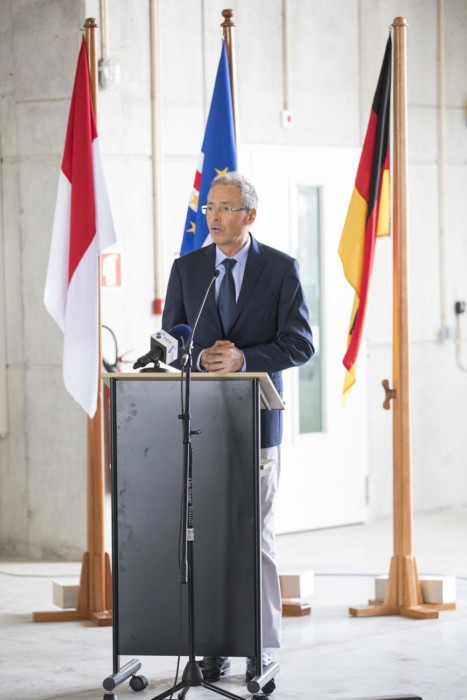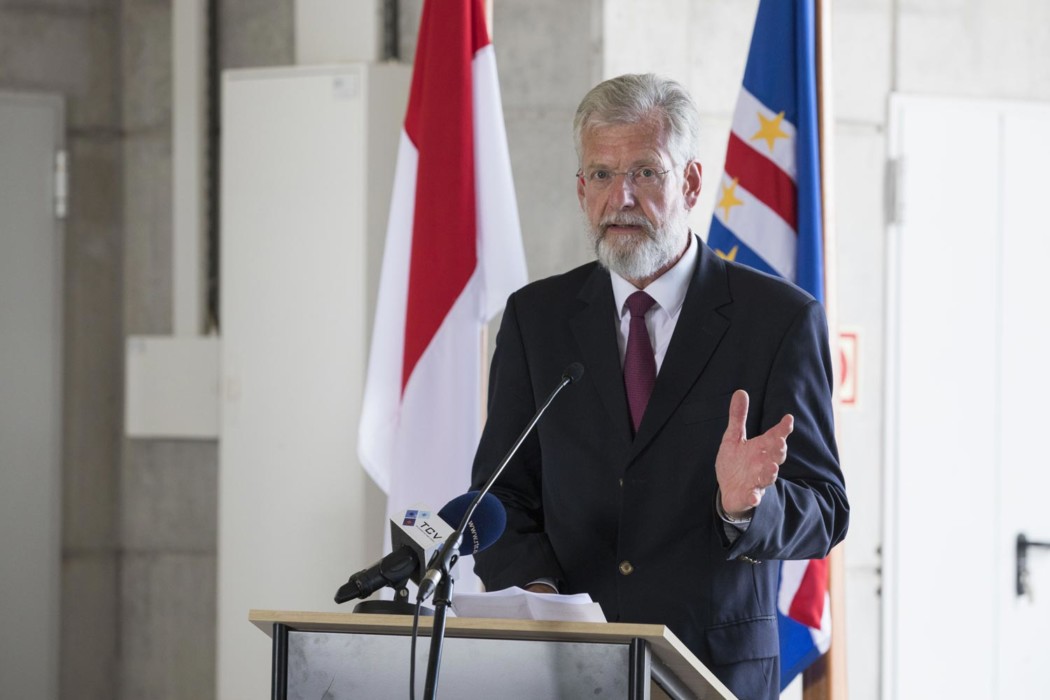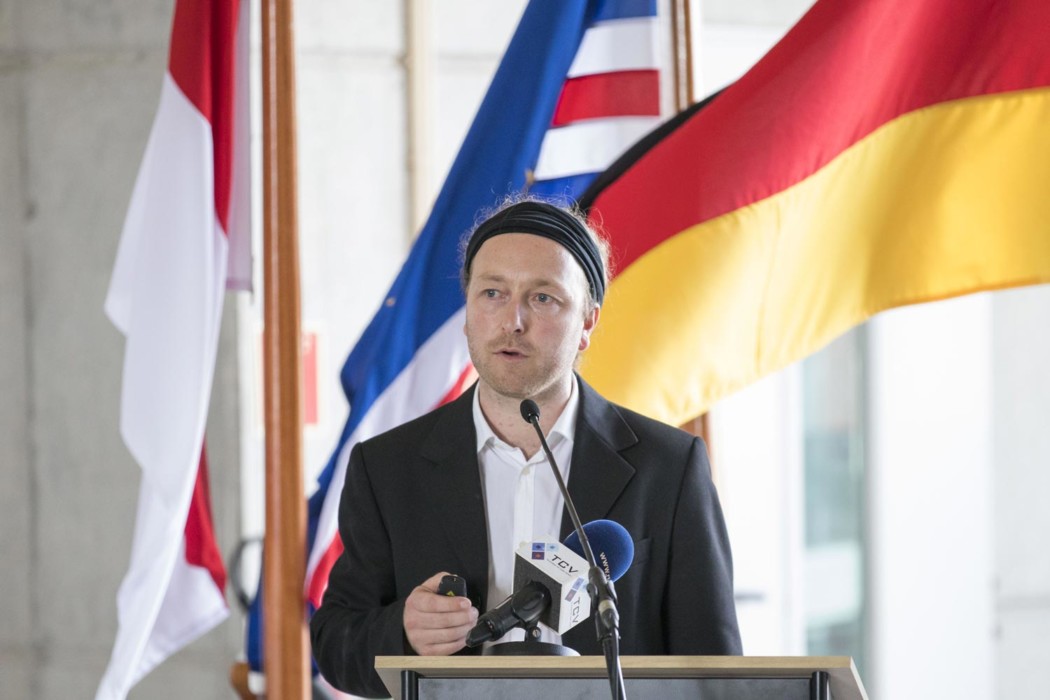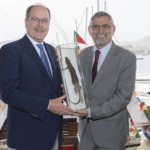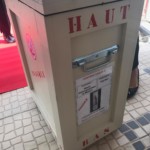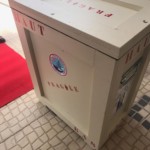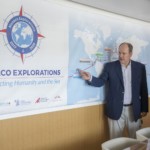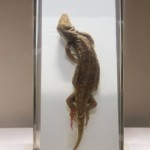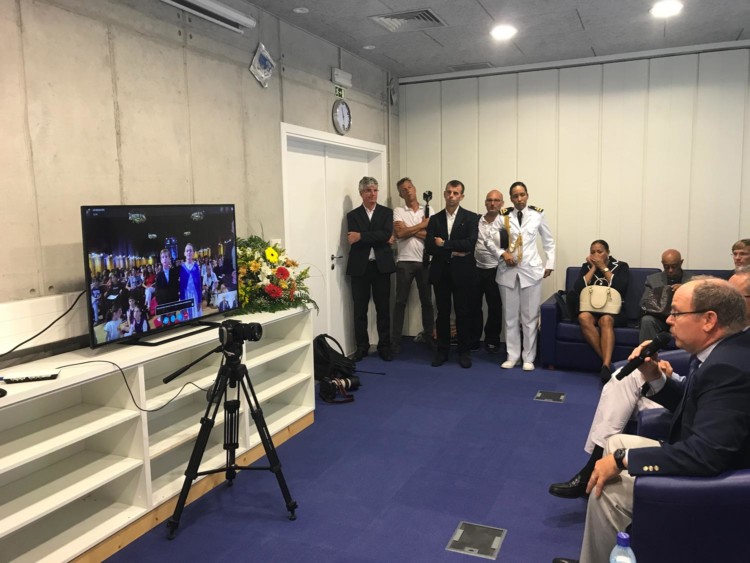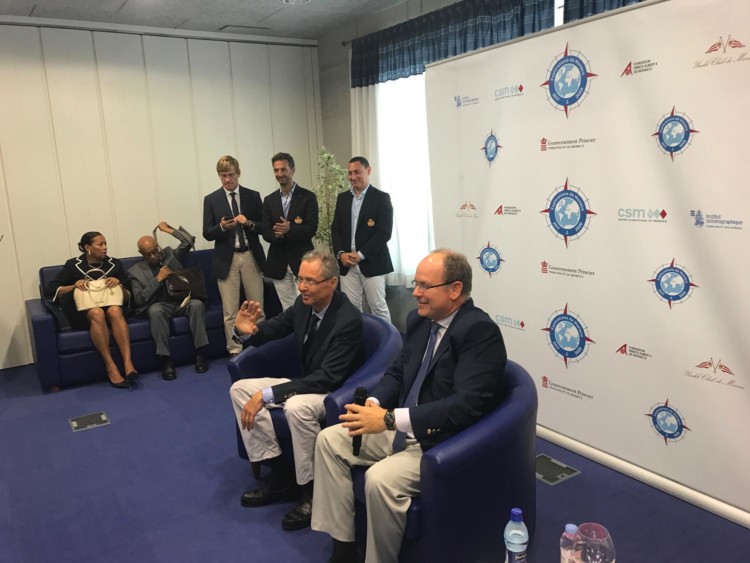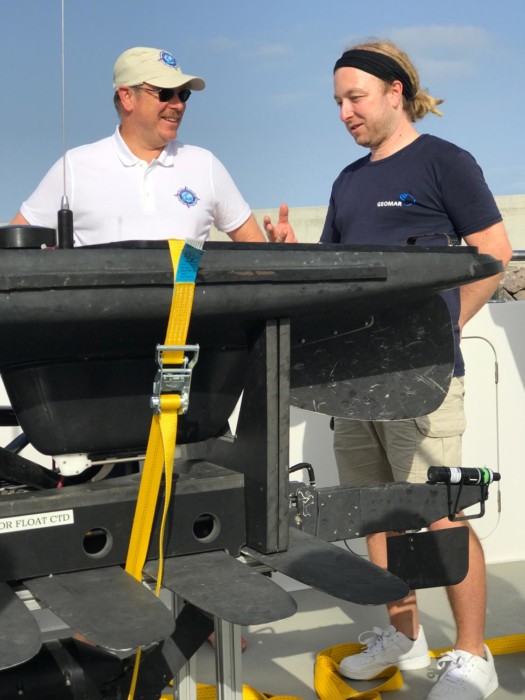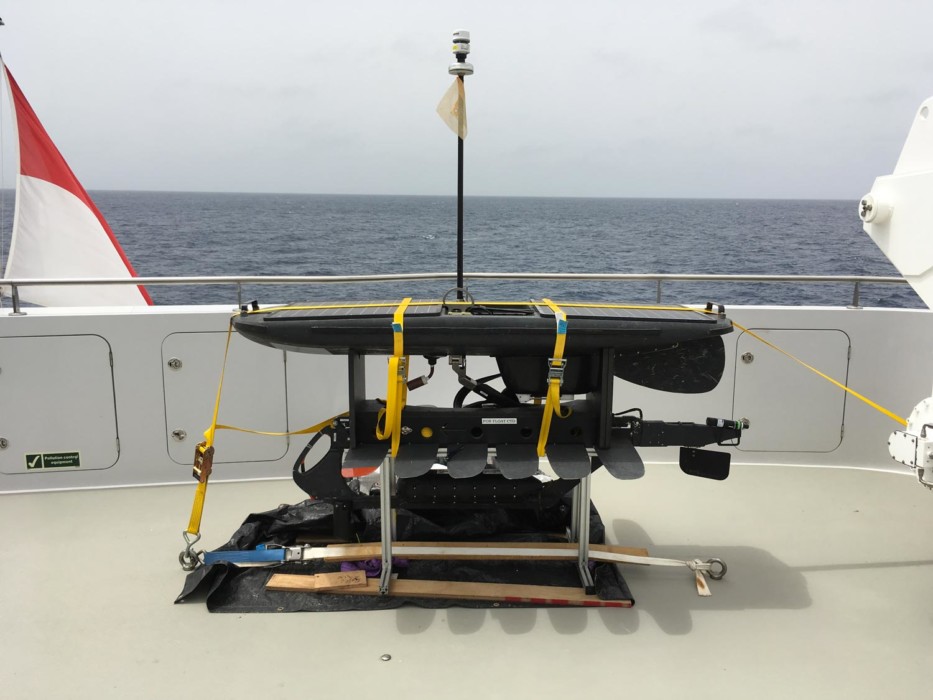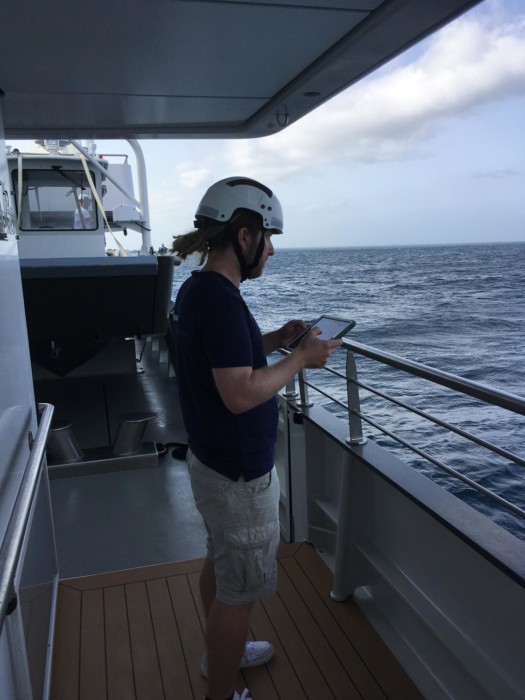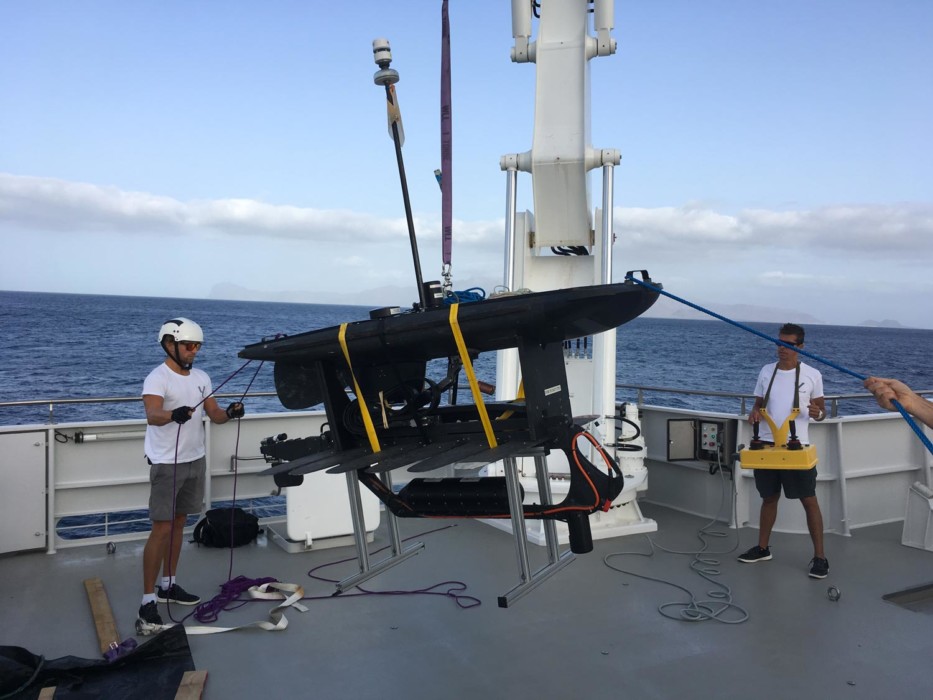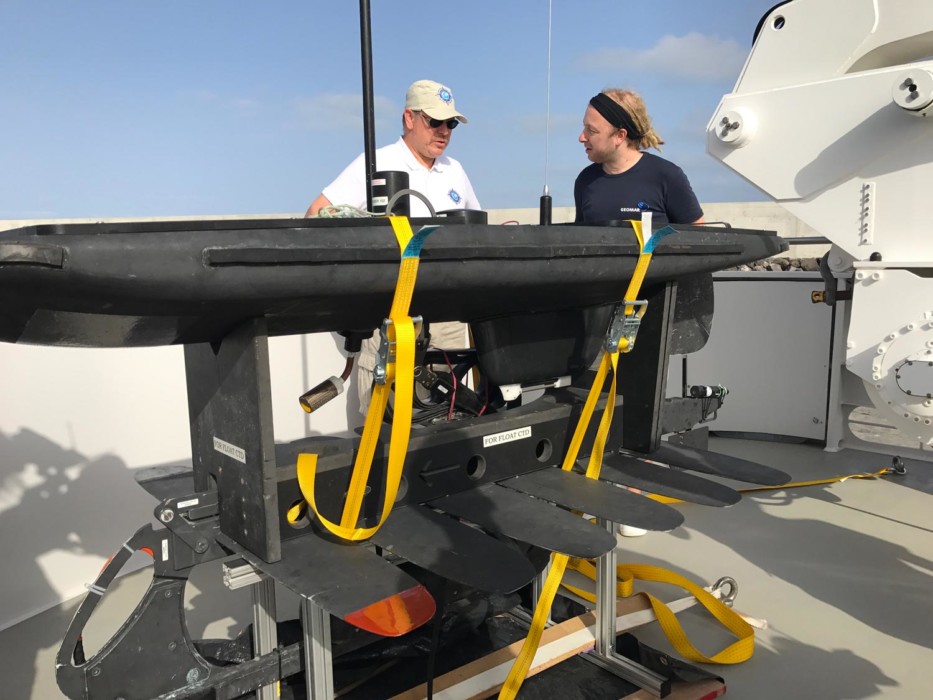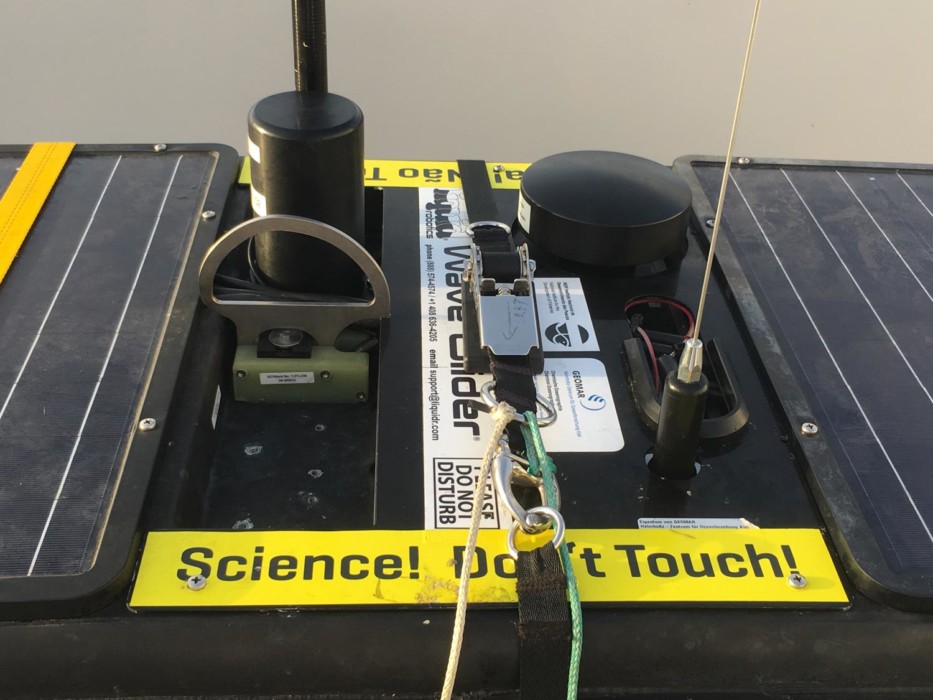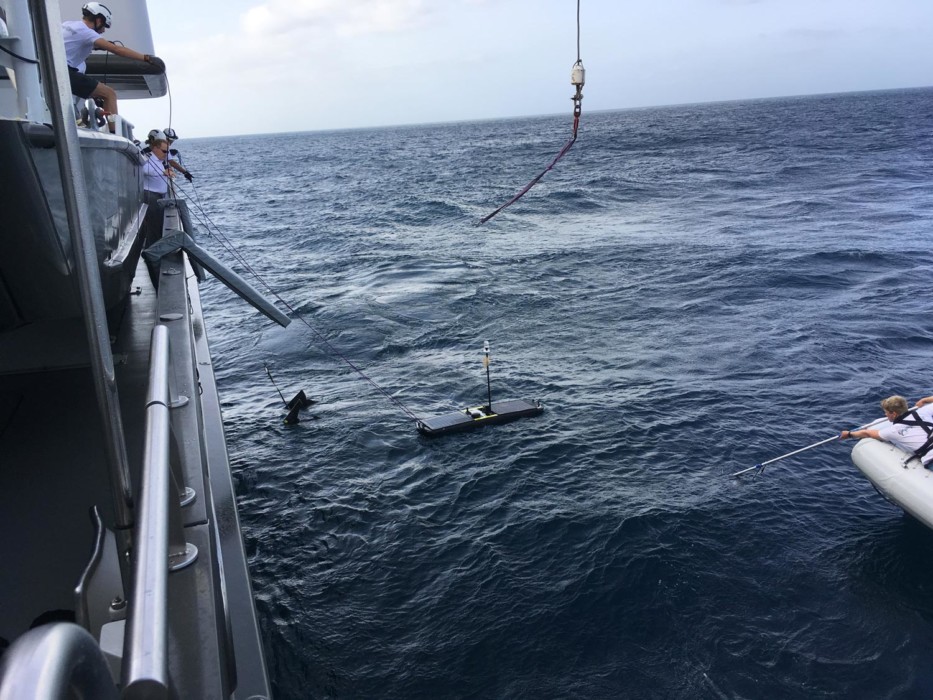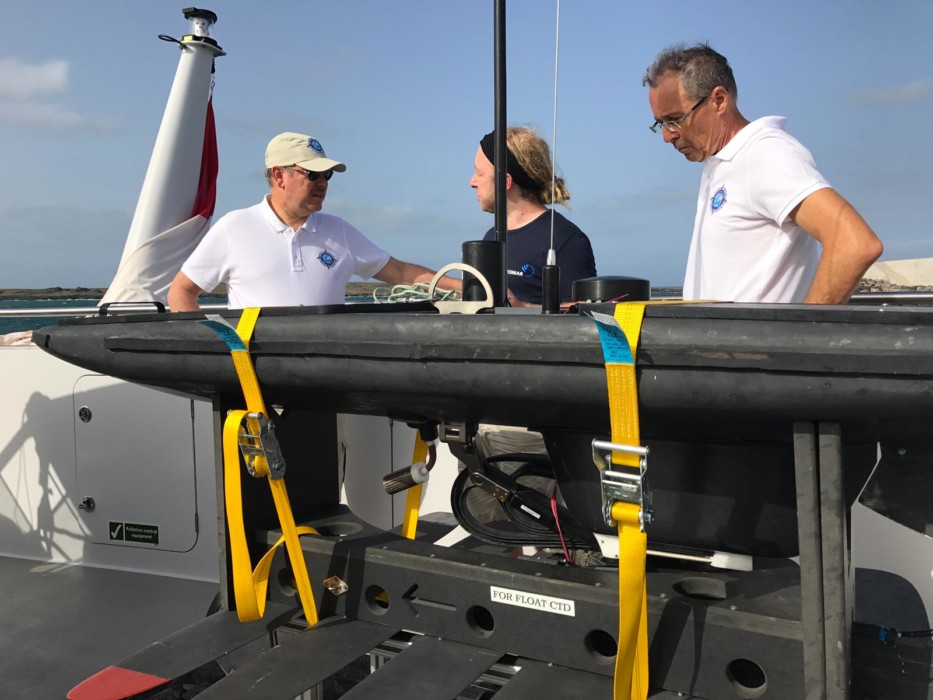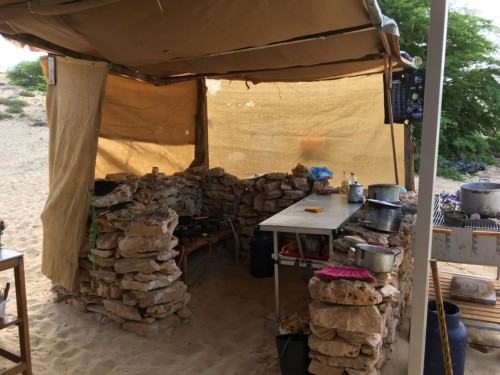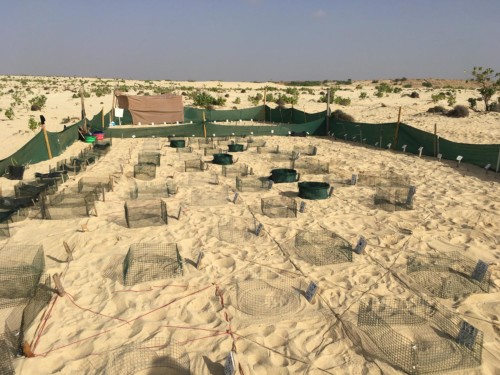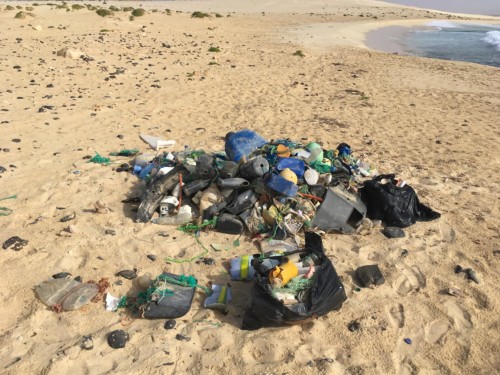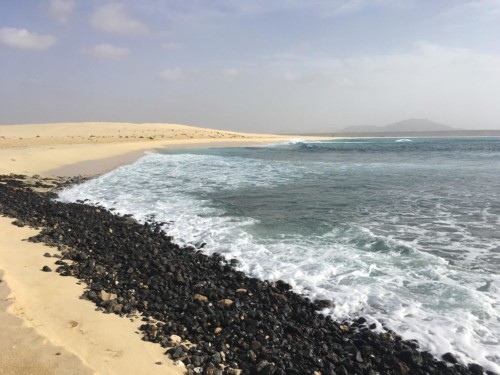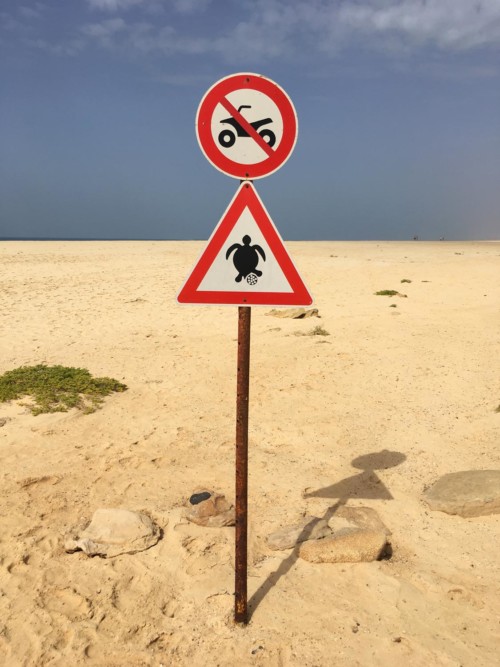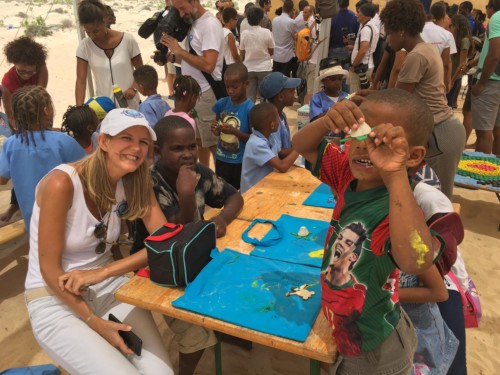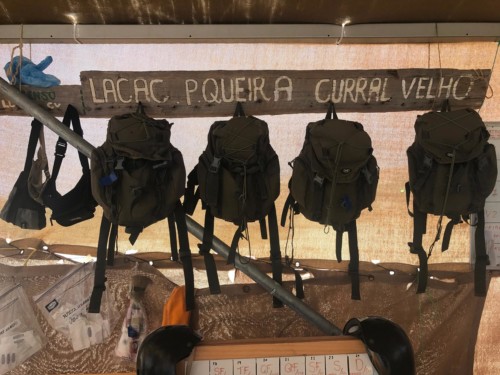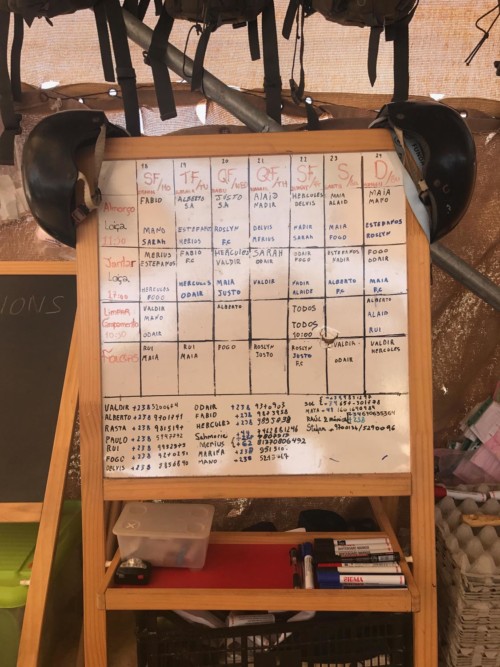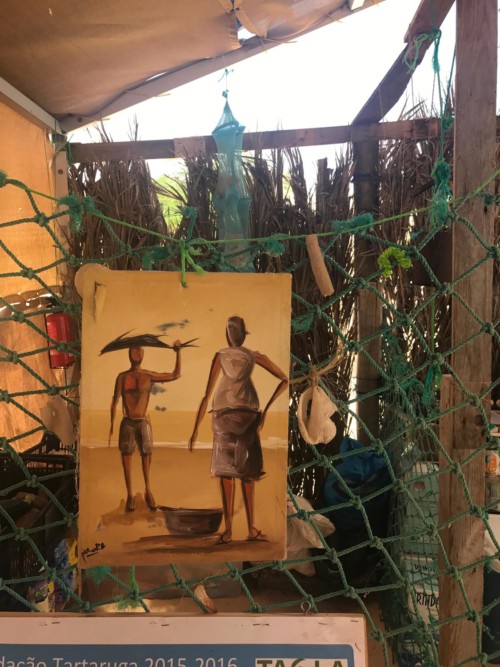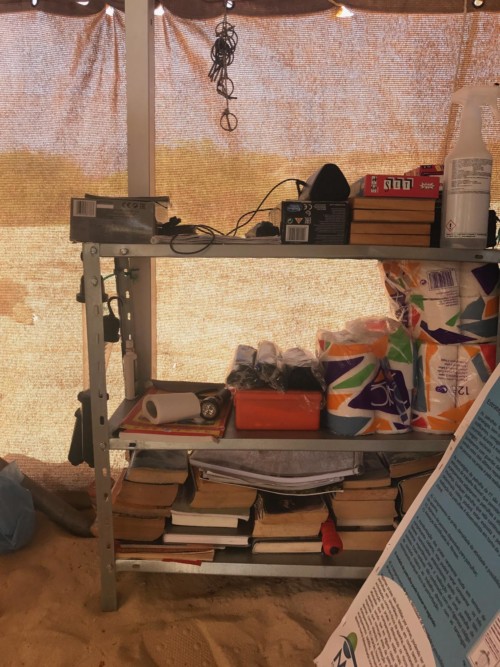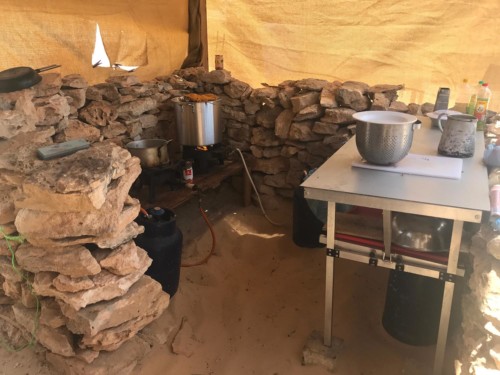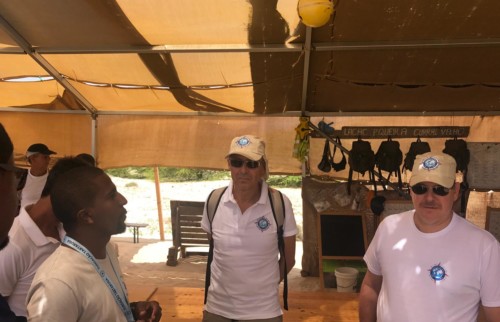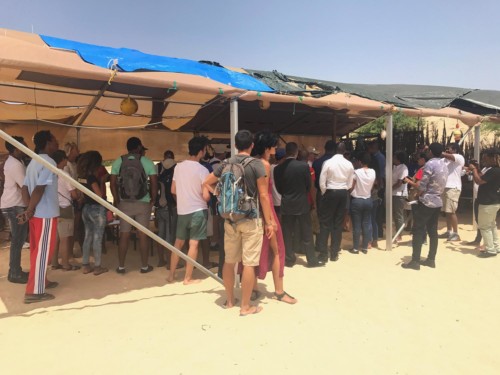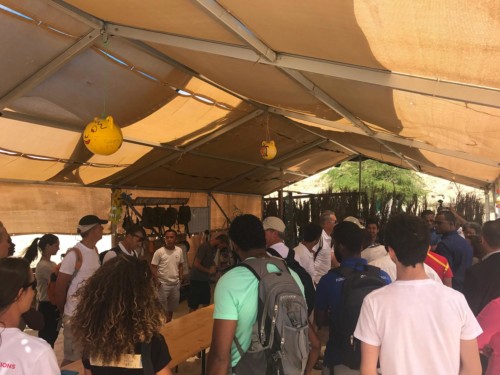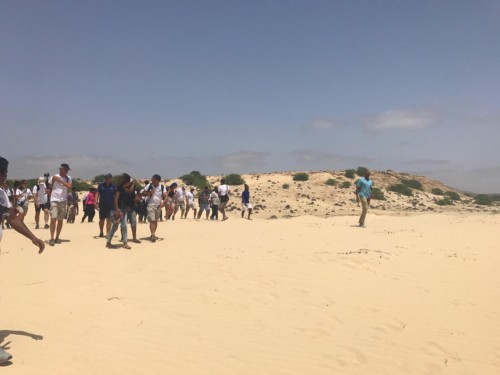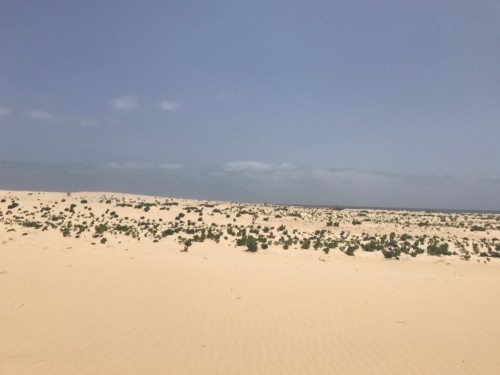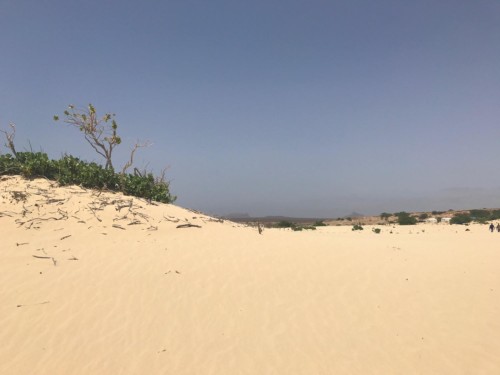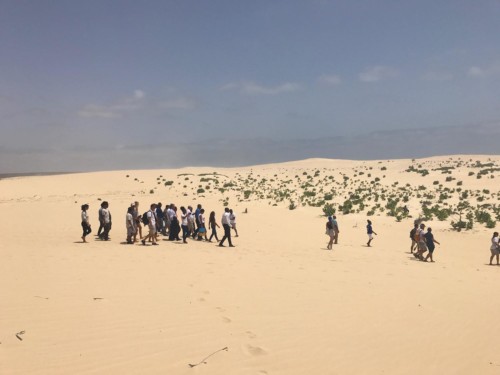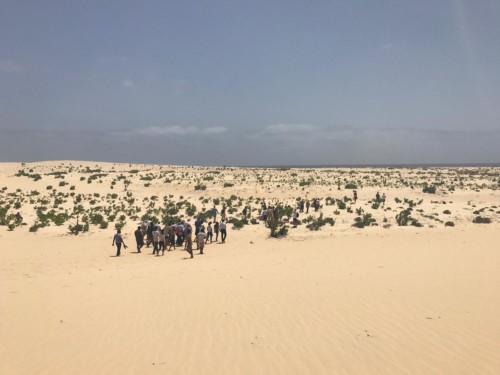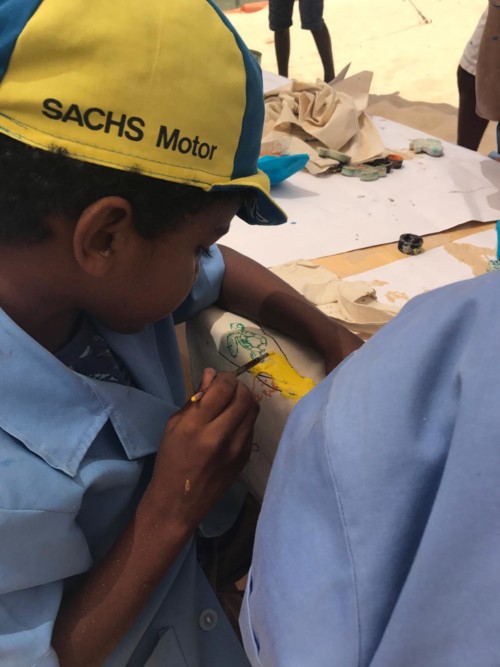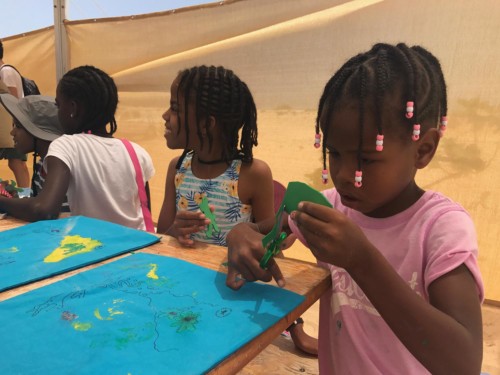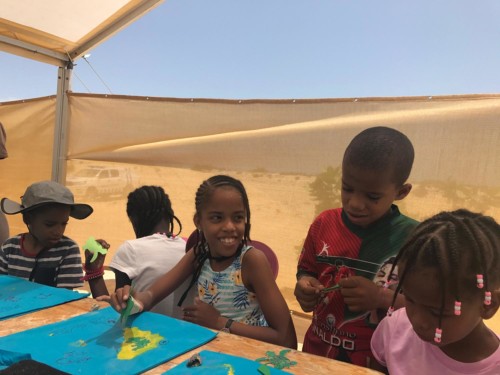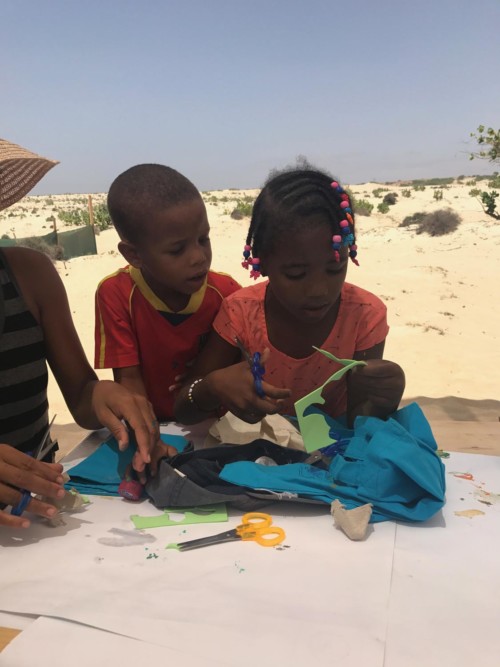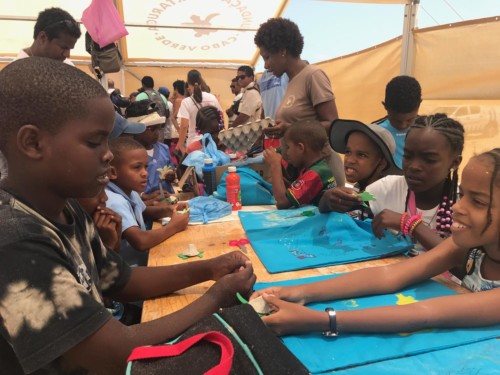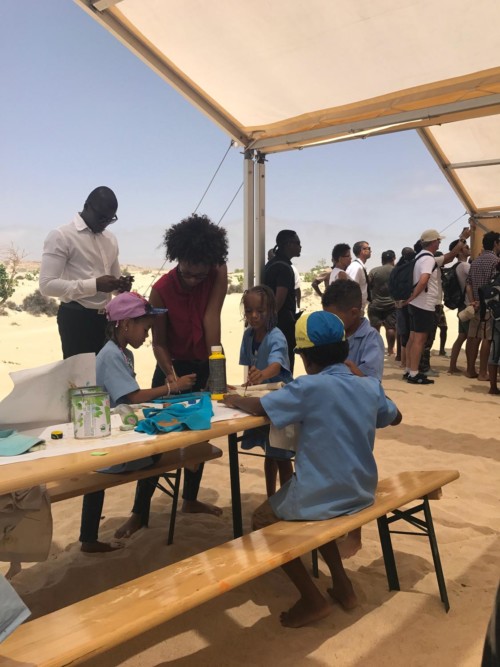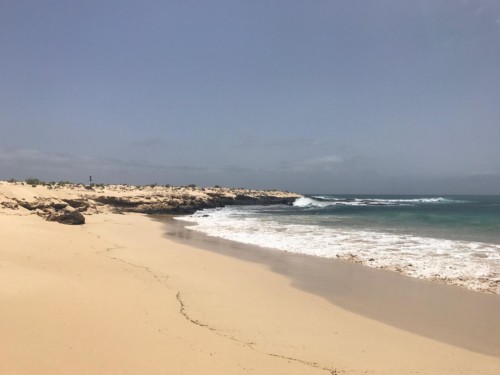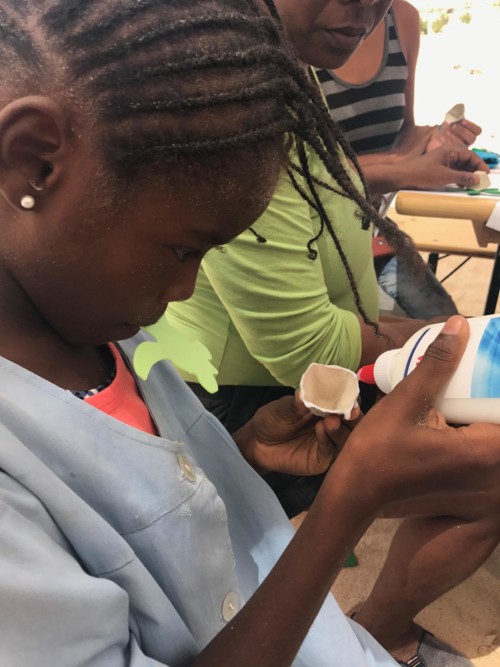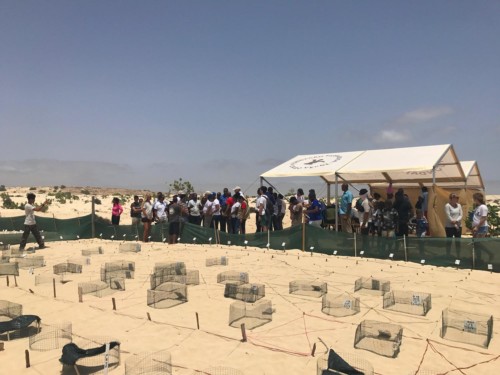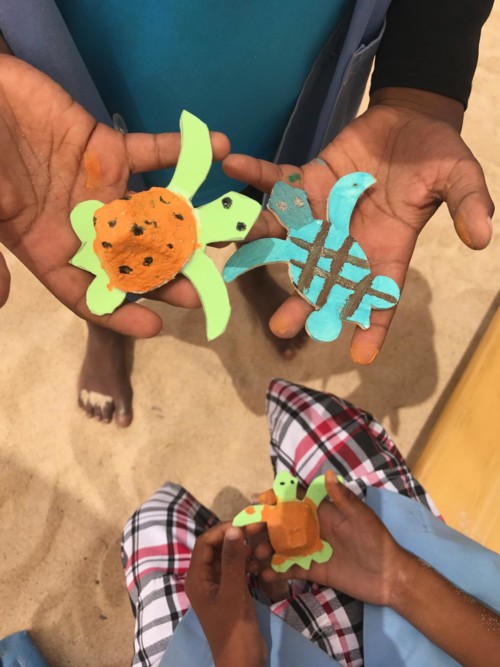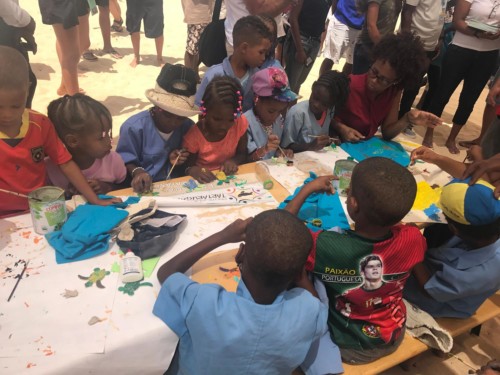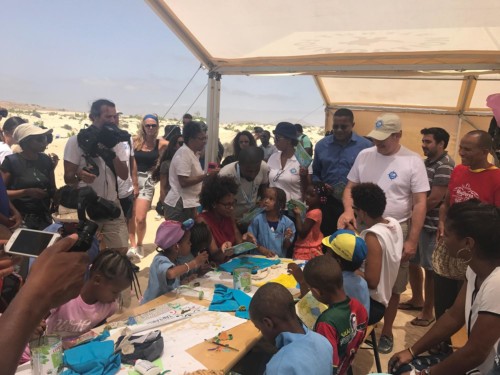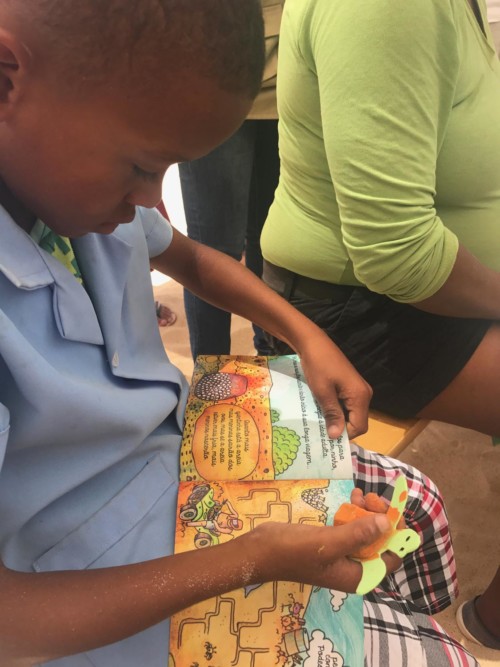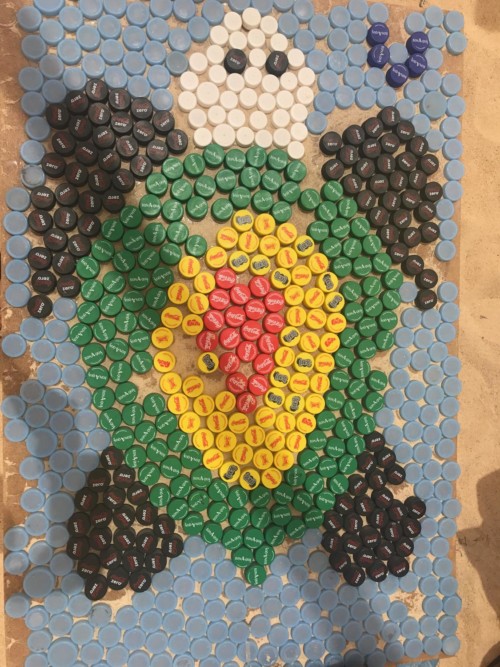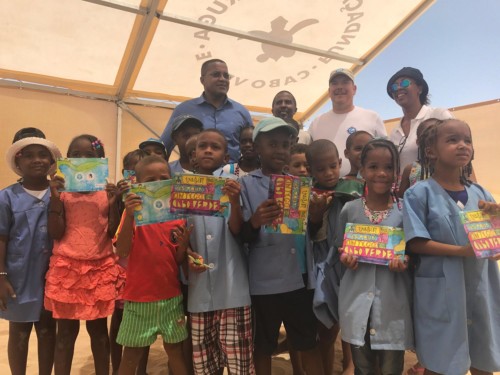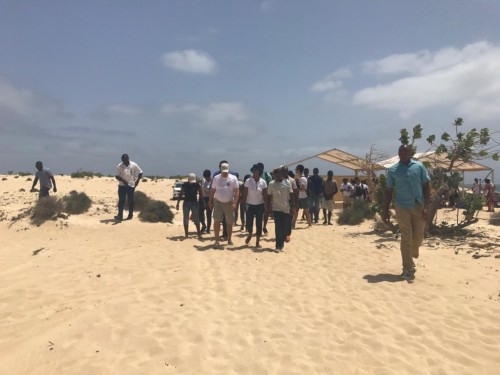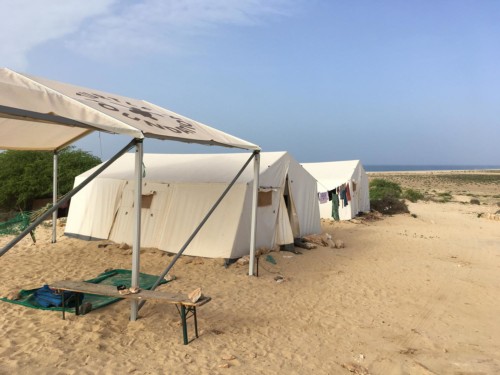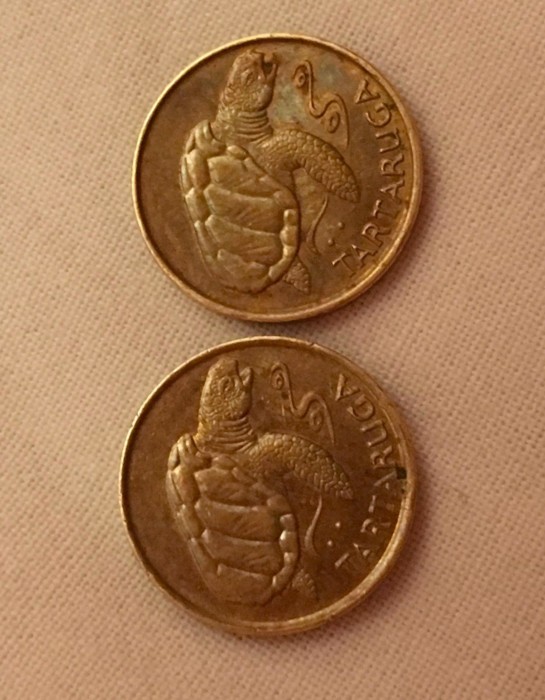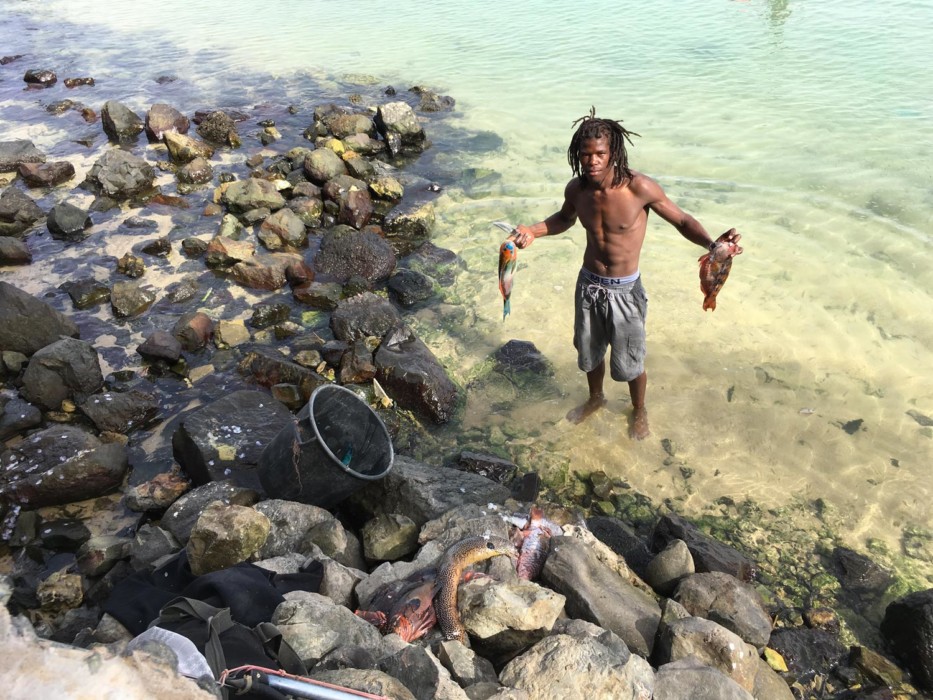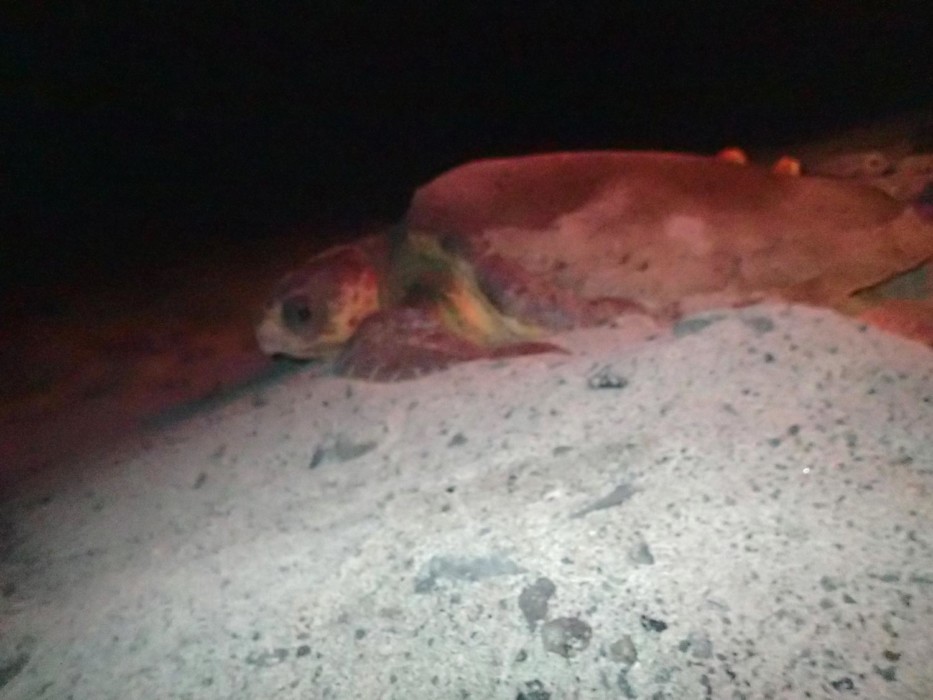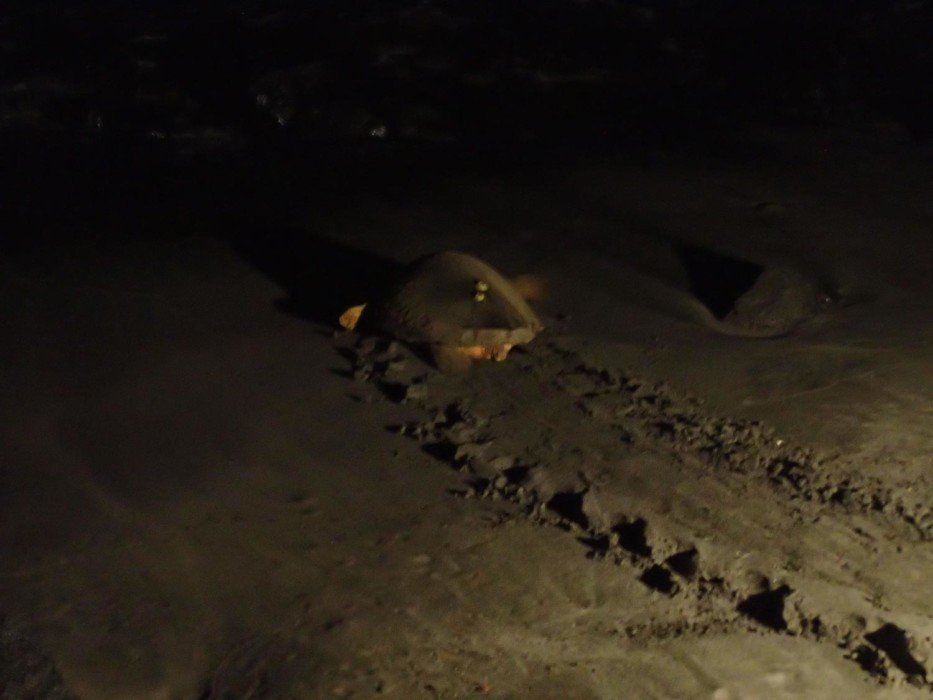In Norway with Geomar and the Centre Scientifique de Monaco, we used a rosette with 12 Niskin bottles. The goal was to collect water by the reef we were studying in order to understand what kind of prey is feeding the coral.
“First the water was filtered on a 180µm mesh to retrieve the macrozooplankton…” said Magali Boussion, senior technician in the Ecophysiology team of the Marine Biology Department, Scientific Centre of Monaco “…and then re-filtered on GF/F filters to collect the mesoplankton. The plankton will then be analyzed for its natural ∂13C and ∂15N isotopic signature. The comparison with the isotopic signature of the coral tissue will help us to understand the type of prey on which corals are feeding.”
Photos © Geomar.
During our mission with Geomar in the Norwegian seas we have used a specific tool.
JAGO is its name.
it’s a manned submersible dedicated to exploration and research in marine sciences. It allows researchers to go to a depth of 400 meters.
Its weight is 3 tons and its size is 3 x 3 x 2.5 m
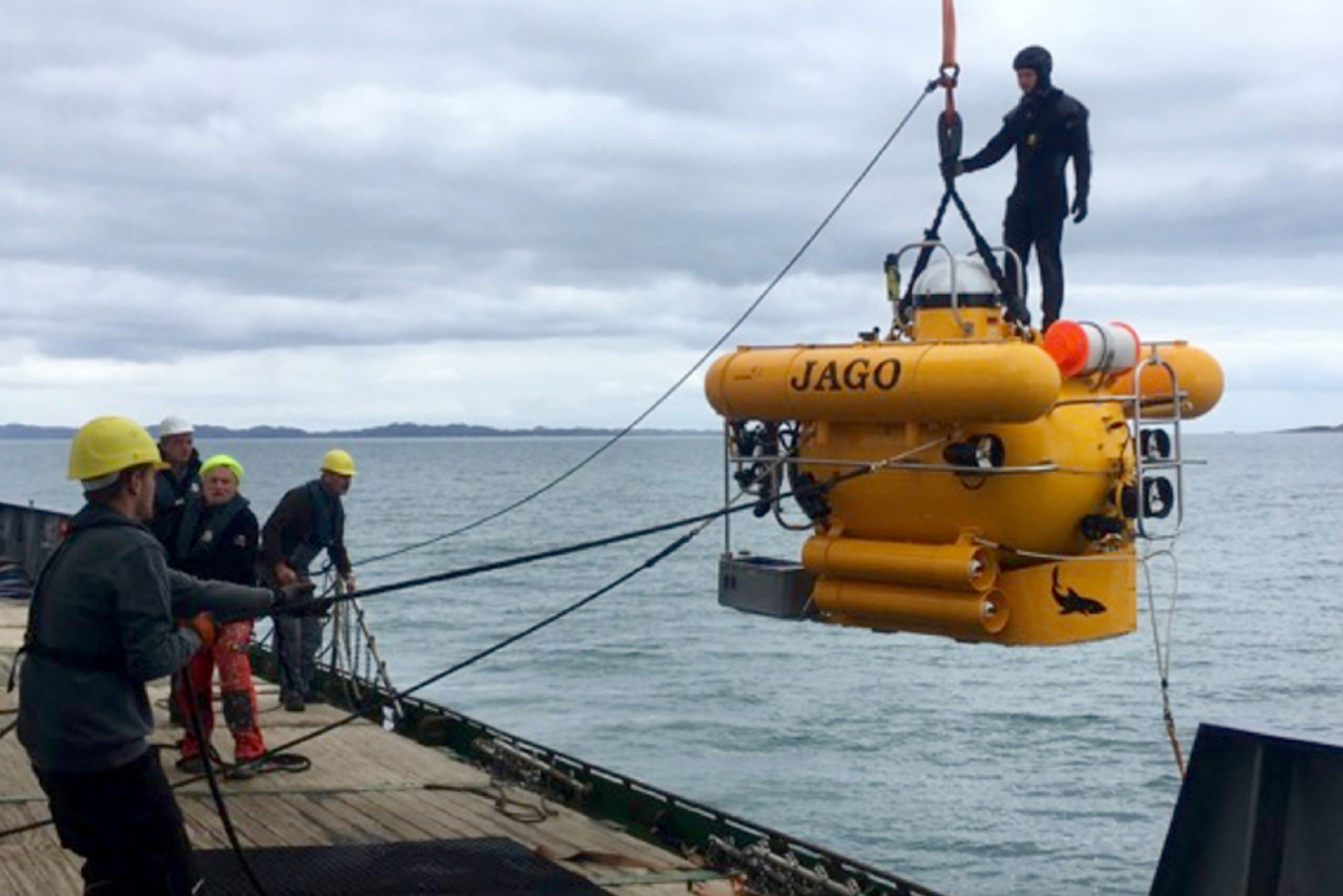
Piloted by and operator, the submersible moves underwater without being connected by an umbrilical cable to a support ship.
Its robotic arm is very efficient to collect specific organisms, solid, gas or water samples and its digital cameras can give photo or video views from the seafloor.
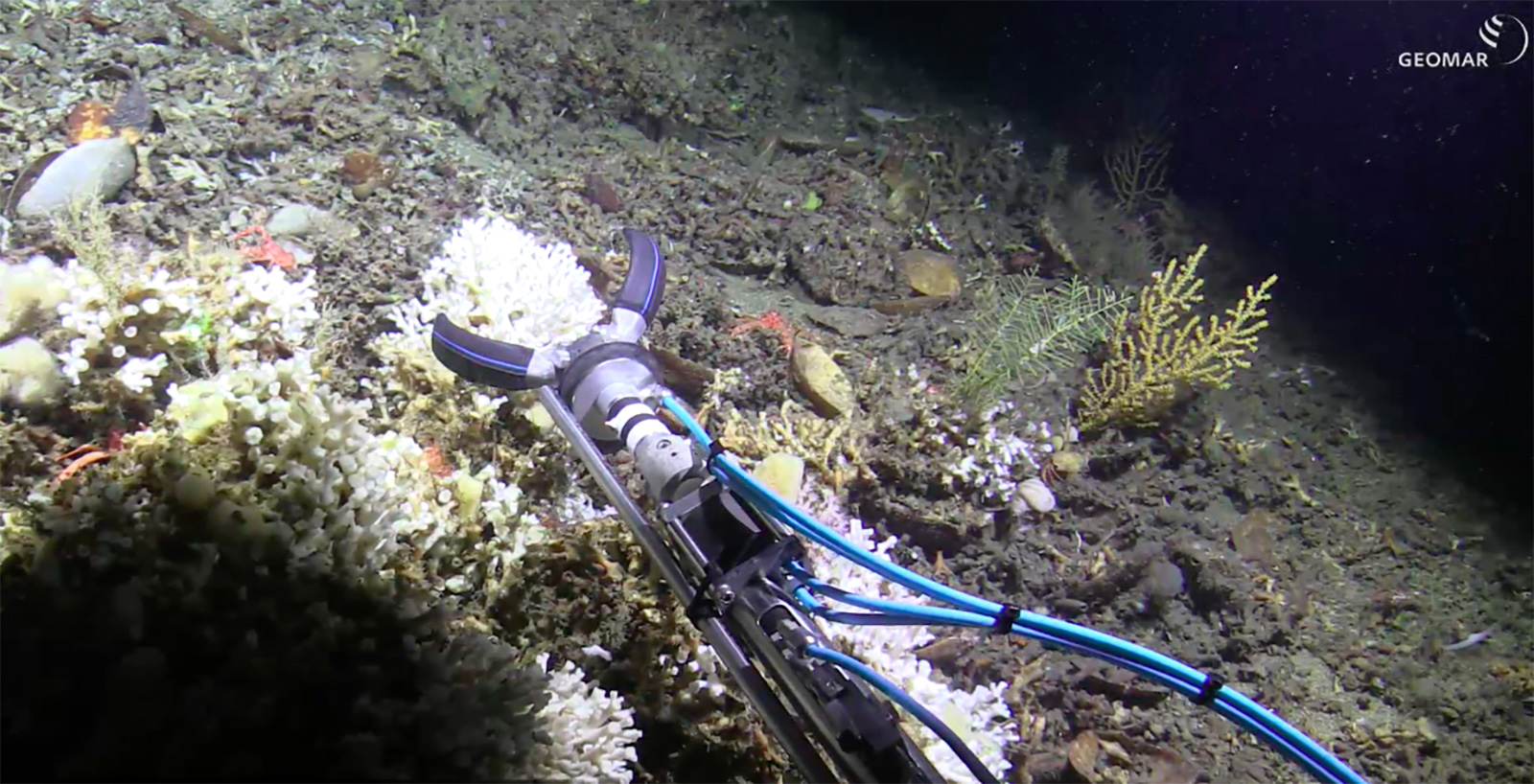
JAGO is presently the only manned research submersible in Germany.
It belongs to Geomar and is a new example of the deep and strong collaboration between Monaco Explorations and the German institute.
This common work started in Cabo-Verde In September 2017 to retrieve and put back on seafloor a bottom lander and launch a wave glider.
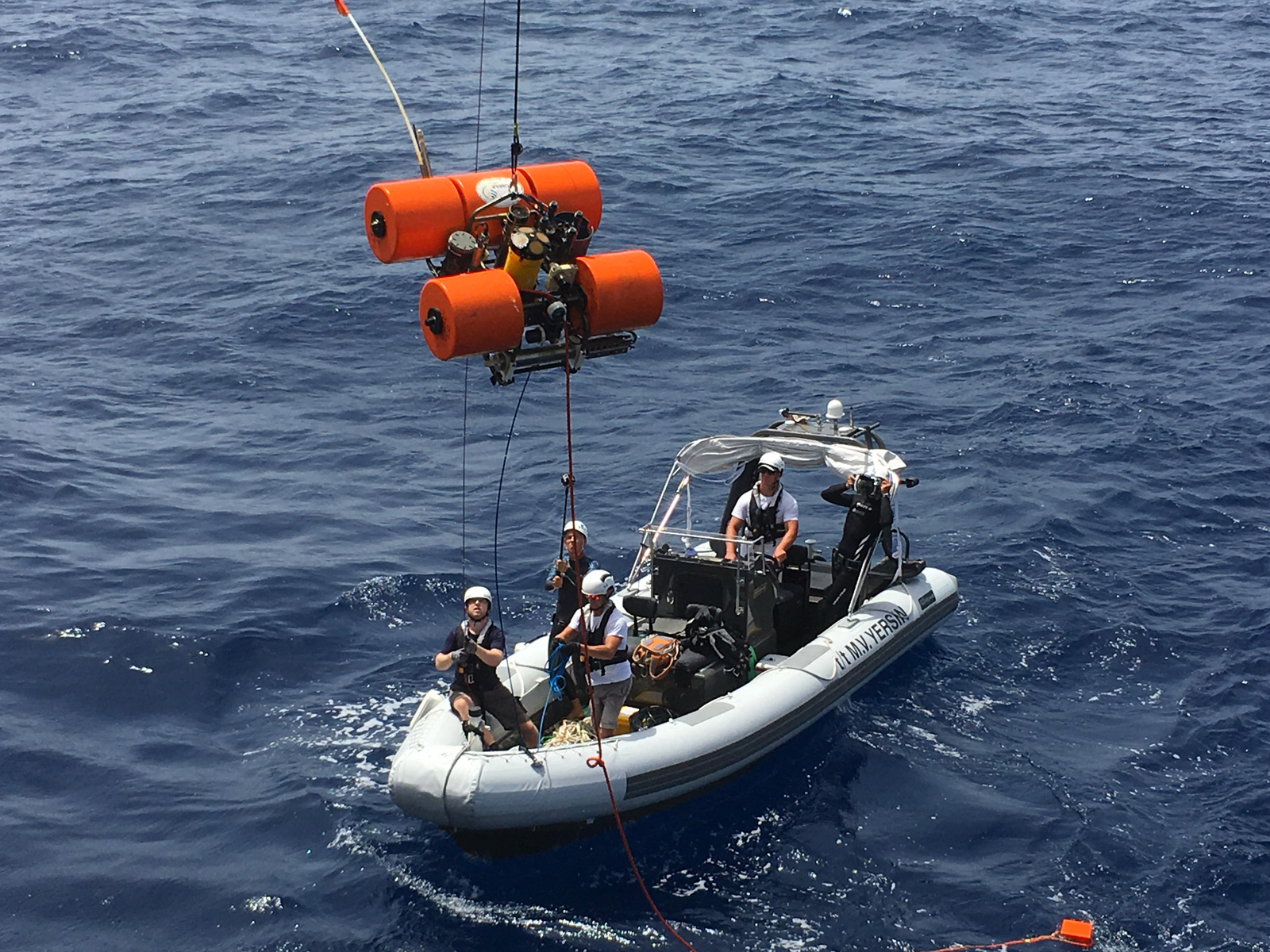
Monaco Exploration, the Scientific Center of Monaco and Geomar team-up to collect deep sea water corals in Norway on board the RV Poseidon
Leaded by Dr. Janina Busher from GEOMAR institute, one of the goals of this mission is to collect scientific data about the deep sea coral Lophelia pertusa at four different locations of Norwegian coastal and offshore waters.

Dr. Christine Ferrier Pagès and Dr. Stéphanie Reynaud, with the help of Magali Boussion, technician in the Coral Ecophysiology team, are working since several years on the ecophysiological aspects of deep sea corals and are happy to extend their knowledge to Norwegian one’s.
The scientific group of Monaco has several aims during this mission: the first consists in collecting corals in order to determine, back at the CSM laboratories, the lipid, protein and carbohydrate contents of the coral tissue. The other aspects are onboard experiments including coral incubations in small glass chambers to assess the carbon budget and the mucus degradation. The last goal is to perform feeding experiments with 13C and 15N labelled prey. The team is also participating to the general work on board.
Coral sampling is conducted with the submersible JAGO from GEOMAR institute, which can go to a maximum of 400 meters depth. For each dive, a small robot – linked to JAGO – collects the samples needed in a bucket. The entire dive is recorded by video from a camera fixed on the submersible. For water collection, a CTD (device of 12 bottles of 10L allowing to take the sea water) is deployed several times during the day on the reef from where the coral samples have been collected.
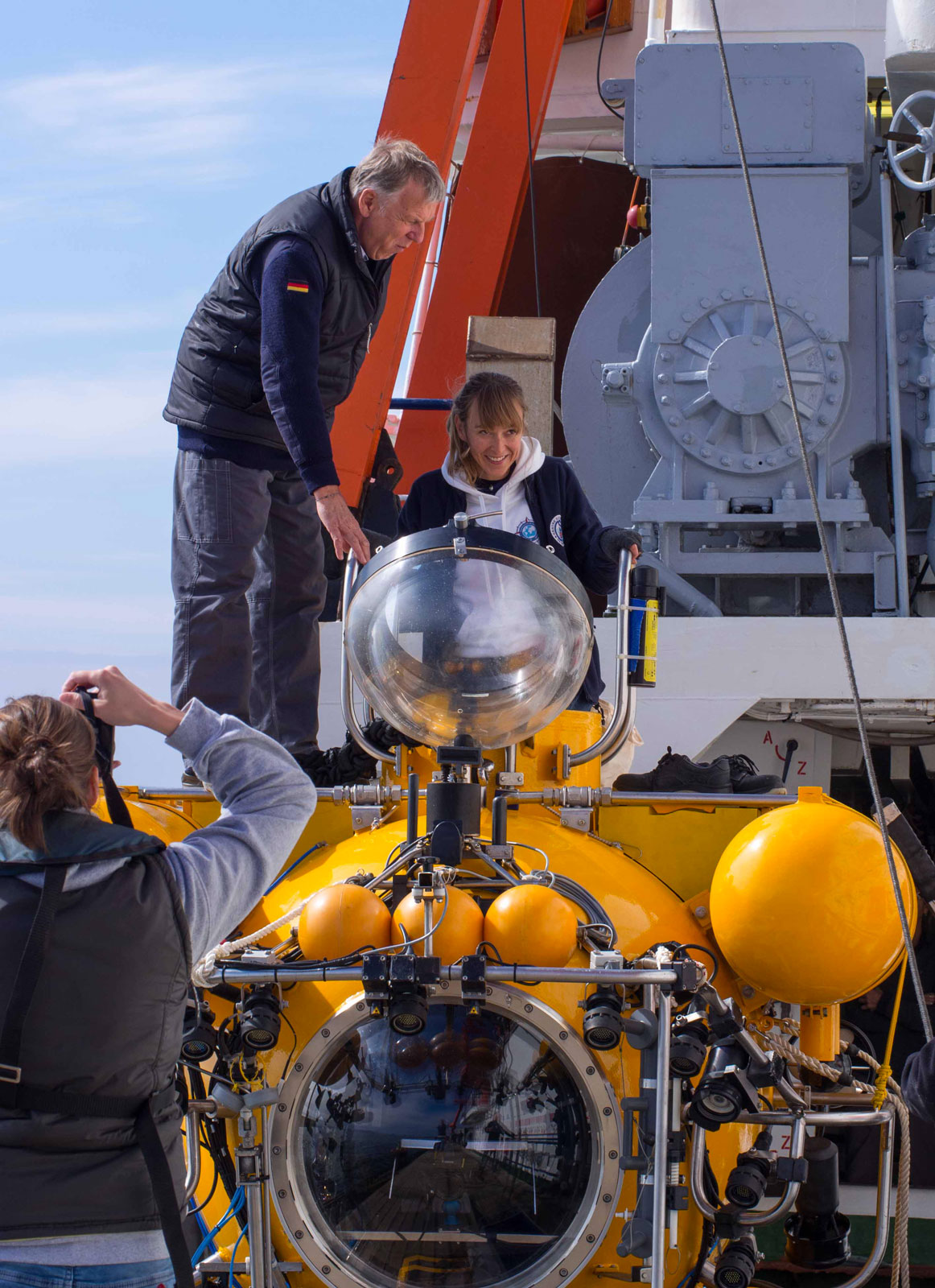
Last Friday the GEOMAR Helmholtz ’s team went out to Santa Luzia in order to have a visual inspection of the bottom lander retrieved (see our post) and deployed (Santa Luzia) last September.
« Peri and Dario went diving and they did a really great job… » said Björn Fiedler (who is a bottom lander specialist and currently on a six-month research stay in Mindelo) « …They know that area quite well and the exact time to enter the water (depending on the tides and the current) ». The 2 divers did their inspection and removed the end caps of the trap as well as the painter lines.
« The lander is already quite a bit covered by biofouling… we intend to recover it on Nov 5th. » add Björn.
Looking forward to seeing the data from this deployment.
During Prince Albert’s visit in Cabo Verde we christened the new GEOMAR Ocean Science Center Mindelo, Skyped with 300 schoolchildren in Monaco, visited the island of Branco to pick up Raquel and Aurélien and hear about their work looking for evidence of the giant skink, learned about the GEOMAR wave glider that is aboard the Yersin, and visited a sea turtle hatchery on the beaches of Boa Vista.
GEOMAR Ocean Science Center Mindelo
The GEOMAR Helmholtz Center for Ocean Research Kiel and the National Cabo Verdean Fisheries Research Institute INDP generously hosted an event to welcome HSH Prince Albert II to Cabo Verde with a first opening of their Ocean Science Center Mindelo (officially opening in late 2017).
The event was attended by nearly 200 people who heard speeches from:
- HSH Prince Albert II of Monaco
- Robert Calcagno, Director of the Oceanographic Museum of Monaco
- Carlos Évora, Director Nacional de Economia Marítima of the Republic of Cabo Verde
- Dr. Astrigilda Silveira, Vice-Rector of Universidade de Cabo Verde
- Dr. Osvaldina Silva, President of the Instituto Nacional de Desenvolvimento das Pescas (National Institute for Fisheries Development)
- Dr. Peter Herzig, Director of GEOMAR
- Dr. Björn Fiedler, Chief Scientist at GEOMAR
Read more about the creation of the Ocean Science Center Mindelo here event here, and watch the live broadcast on the GEOMAR Facebook Page.
Scinque Géant Returned to Cabo Verde
HSH Prince Albert II (with help from our partners at the Oceanographic Museum of Monaco and Head of Missions Robert Calcagno) returned to Cabo Verde for research purposes one of the giant skink specimens collected in the early 1900’s by Prince Albert 1st, which has been housed at the museum.
President of Cabo Verde, Jorge Carlos Fonseca, hosted Prince Albert II for this symbolic ceremony of collaboration between Monaco and Cabo Verde.
[vc_row][vc_column][gem_video video_src=”https://www.monacoexplorations.org/videos/TraditionalDance.m4v” image_src=”27327″][vc_column_text]
HSH Prince Albert II and Robert Calcagno Skype with 300 Schoolchildren in Monaco
Educating and involving youth in Monaco Explorations is one of the main goals of this campaign. There is no better place to start than at home. We were happy to facilitate a “virtual field trip” to Cabo Verde’s Ocean Science Center Mindelo via Skype for more than 300 schoolchildren at the Oceanographic Museum of Monaco. The children prepared questions for HSH Prince Albert II and Museum Director, Robert Calcagno.
You can watch the Skype session from the Museum’s Facebook Page.
Questions from the kids:
- Is your family with you on the boat?
- Do you miss them?
- When are you going to come back to Monaco?
- The monk seals could disappear. How are you going to save them?
- What can we do to help save the oceans?
- The expedition is 3 years! Will the crew on the boat be able to see their families?
[/vc_column_text][/vc_column][vc_column][/vc_column][vc_column][/vc_column][vc_column][/vc_column][/vc_row]
This post is continued from Part One
During Prince Albert’s visit in Cabo Verde we christened the new GEOMAR Ocean Science Center Mindelo, Skyped with 300 schoolchildren in Monaco, visited the island of Branco to pick up Raquel and Aurélien and hear about their work looking for evidence of the giant skink, learned about the GEOMAR wave glider that is aboard the Yersin, and visited a sea turtle hatchery on the beaches of Boa Vista.
Back to Branco
In a recent blog post, we explained that scientists Raquel Vasconcelos and Aurélien Miralles were camping on the island of Branco to collect samples and search for evidence of the presumed extinct giant skink. Today their work is complete and HSH Prince Albert II makes the trip to Branco to join them for a few hours and learn about their time there, and find out first hand what, if anything, they have discovered about the giant skink.
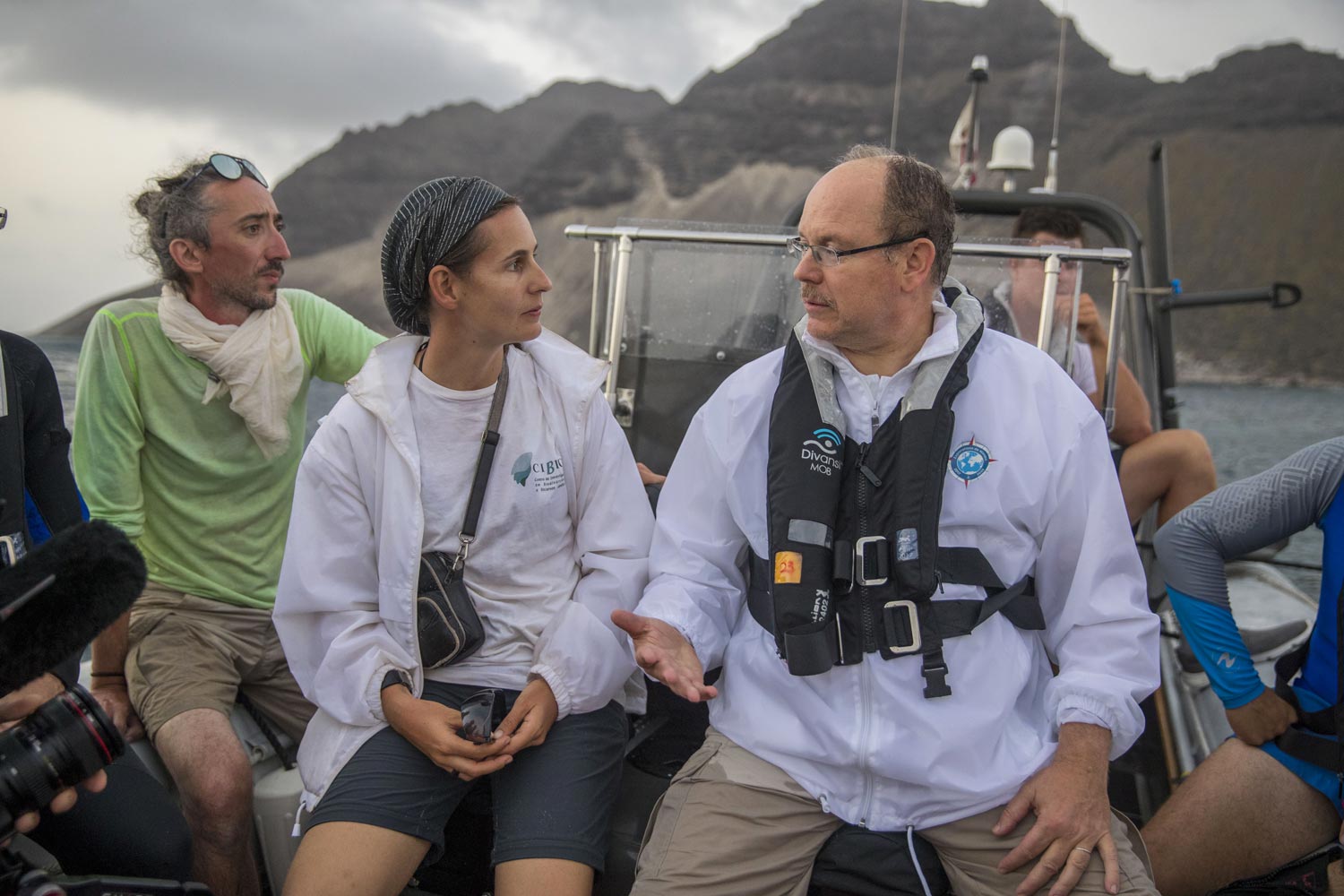
GEOMAR Wave Glider
Dr. Björn Fiedler of GEOMAR talked with HSH Prince Albert II to explain the purpose and capabilities of the wave glider and bottom lander, both of which were deployed from the Yersin.
“Jointly with Monaco Explorations we will launch state-of-the-art measuring platforms such as lander and wave glider to collect physical, chemical and biological data which are important for future marine protected areas” said Dr. Björn Fiedler from GEOMAR.
Sea Turtle Hatchery
Sea turtles have been on this planet since the dinosaur ages and are disappearing all around the world, becoming an endangered species in just the last 200 years. Sea turtles play a vital role in marine ecosystems. You can read more about Why Healthy Oceans Need Sea Turtles here.
The Turtle Foundation, Project Cabo Verde invited Monaco Explorations to Porto Ferreira beach on Boa Vista Island so that we could learn about their work and gain a better understanding of the importance of sea turtle preservation in the larger scope of ocean conservation. Prince Albert II visited the hatchery and talked with the scientists who are stationed there and he gave children’s books, depicting the threats that sea turtles face, to the kids who were participating in a day camp with the Turtle Foundation.
[vc_row][vc_column][gem_video video_src=”https://www.monacoexplorations.org/videos/Hatcherywelcome.m4v” image_src=”27292″][vc_column_text]
During Monaco Explorations visit to the hatchery a few days before HSH Prince Albert arrived, we were very lucky to have been invited to witness a turtle laying her eggs at night. (These photos are courtesy of Head of Mission, Pierre Gilles)
[/vc_column_text][/vc_column][vc_column][/vc_column][/vc_row]
After leaving Branco, we traveled to the neighbor island of Santa Luzia where the GEOMAR team placed the bottom lander in its next location just off the coast at about 20m depths. It was a very windy morning and we were lucky to have professional divers with us to help determine a good location in such a rough sea. It was quite a chore also for the Yersin crew to get the bottom lander off the deck and into the water, as the wind sways the arm of the crane and threatens damage to the vessel.
After placing the bottom lander, the Yersin traveled back to Mindelo to welcome HSH Prince Albert II on the mission. These dolphins escorted us for a long period of that trip. Here is an unedited video taken with an iPhone where you can really get a feel for the dolphins that were traveling on both sides of the Yersin, and hear the wind and the sea. Enjoy!

[vc_row][vc_column][gem_video video_src=”https://www.monacoexplorations.org/videos/dolphins.m4v” image_src=”27326″][vc_column_text]
[/vc_column_text][/vc_column][/vc_row]
